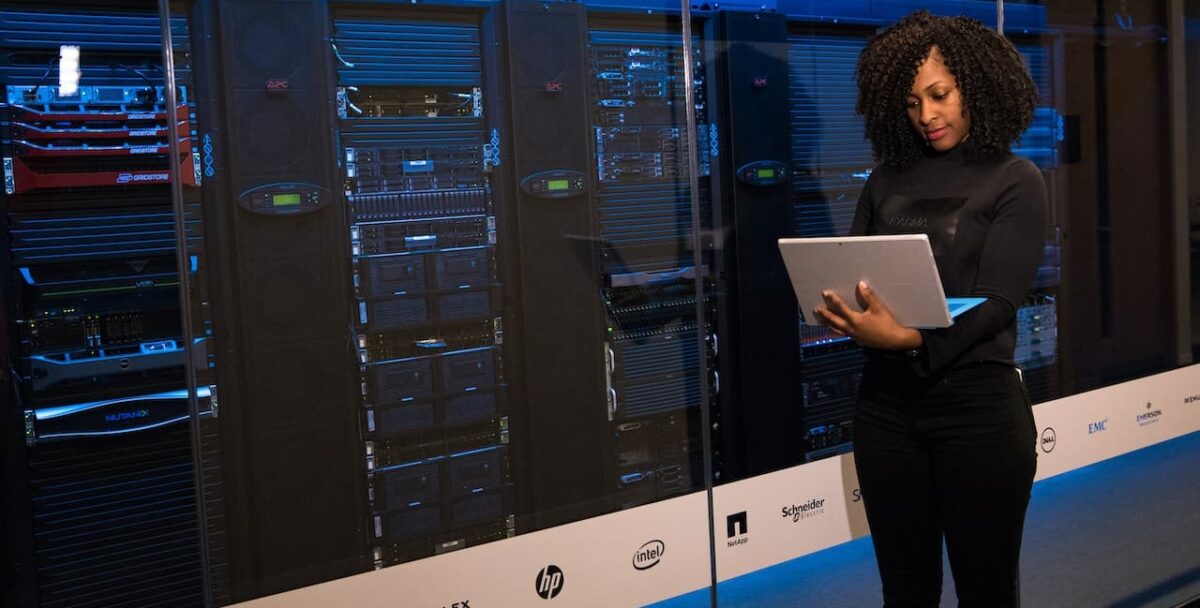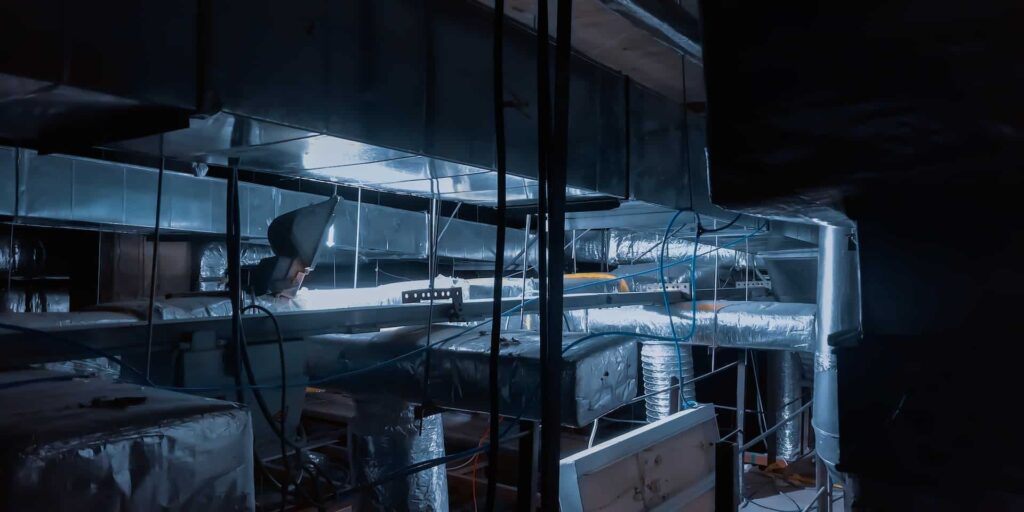Most businesses today spend substantial money on protecting their server rooms. It stores client information, contracts, financial transactions, sales analysis, and more. Spending time and money to increase security from outside threats is always essential. It’s hard to imagine what you would do if you lost all of your data.
Hackers aren’t the only reason your equipment may malfunction and result in corrupt data. Environmental contaminants can also get into your server rooms and can cause disruptions to your IT infrastructure. That’s why server room cleaning is essential. In this article, we’ll look at different ways to maintain a server room so it can maintain its efficiency. Continue reading to learn more.
What Causes Server Room Failure?
Dust and other contaminants are the biggest threat to your data rooms and their equipment. If they aren’t immediately removed, you’re leaving your entire system at prolonged risk. But the question you’re probably asking now is, where do these contaminants come from? That’s easy. Whenever you enter a room, the soles of your feet leave dust or dirt in the area, which can get into your devices.
If your equipment isn’t regularly cleaned, contaminants can grow in size, severely affecting the efficiency of your system. For example, computers can suffer a temperature increase of up to 30 degrees Fahrenheit since they’re working hard to combat dust in their cooling fans. But shoes aren’t the only way harmful particles enter your devices. They can also come from clothing fibers, food debris, and skin particles. Although these contaminants are minuscule to the human eye, they will affect your equipment’s performance.
Other contaminants you should be wary of include metal whiskers and belt debris. Metal whiskers develop when your hardware isn’t properly maintained. Belt debris comes from your equipment’s cooling system. Most people don’t get trained to clean data rooms because it’s not what you think about when working to protect your entire system. Think about when you see some dust on a computer. Your first action is to either blow it off or wipe it with a cloth or tissue.
Yes, it’s “clean” to your eye, but there are still more contaminants around, looking to affect your equipment’s performance. This type of neglect is common among server rooms, leading to system downtime, which can be costly.
Businesses reported that downtime costs them roughly $300,000 to $400,000 per hour, which can be catastrophic. So as you can see, keeping your data room clean is crucial for your equipment and the life of your business.
Related: Data Centers: What They Do & Why? [2023]
How Do You Keep Pollutants Out Of Your Server Room?
It’s virtually impossible to keep contaminants out of your server room because particles are so tiny they will still find a way into your devices. However, before we get into different cleaning practices, there are some things that you can do to limit contaminants in your data room.
Keep Your Cooling Systems Clean
All data centers have a cooling system, and they play an integral part in ensuring your equipment does not overheat. However, although cooling systems provide relief by circulating cool air, they also spread contaminants. As we stated above, belt debris is the most dangerous contaminant released by cooling systems.
It happens when there’s slight friction from pulley misalignment in a cooling system belt. When it’s not fixed, thousands of small pieces of debris are released daily, and it’s likely to go undetected. To prevent this, provide regular cooling system maintenance. Check the pulleys in your cooling system to see if they need to be realigned to reduce friction. You could also invest in low-particle belts that will reduce the number of particles released.
If you want to give your cooling system a deep clean, you can shut it down and use a vacuum with a HEPA filter. For the unit, wipe it down with a microfiber cloth with antistatic chemicals on it. Also, replace your air filters every three months to reduce the harmful particles circulated by your cooling system.
Related: Data Center Cooling 101: From Start to Finish
Manage Human Activity
Human activity is one of the leading causes of debris entering your server room. Not only do you have to worry about shoes tracking dirt and dust, but hair and skin particles too. So to limit the exposure of your equipment to contaminants, have your server room operators wear protective caps and booties over their shoes. The use of control mats can help limit or remove pollutants from shoes before entering a data room.
Another way to manage human activity is by having specific tasks performed outside of the server room. For example, data centers will constantly receive new equipment to replace old or failing equipment. However, most times, the unboxing of these packages happens inside the server room. Instead, have the equipment unpacked and assembled away from the data room. You don’t know what harmful pollutants may have been picked up throughout shipping.
Limit Exposure Points
Besides shoes, doors are another way that contaminants enter your server room. To reduce pollutants, try installing two doors. The first door could lead to an area where people put on their protective gear and wipe their feet on control mats before entering the second, which leads to the equipment.
Also, make sure that you never use automatic doors for your server room. The sensors they contain will react to anyone walking by, causing them to open and exposing your equipment to pollutants.
Do you want to manage your power supply efficiently? Then take a look at these tips from C&C Technology!
How to Clean Your Server Room?
Now it’s time for the pièce de résistance, cleaning your server room. Yes, some cleaning measures should be taken care of daily.
However, it’s not a simple as having your janitor go down to your server room to mop and dust; your equipment needs special care and cleaning by adequately trained staff to ensure that it can remain efficient.
Please take a look at some of our tips below for cleaning various parts of your server room.
Cleaning a Raised Floor
Most data centers use a raised floor to accommodate wires and cables for various pieces of IT equipment. It would be best to clean these floors at least once a week, with a dry mop.
Don’t use a broom because the harsh bristles will cause pollutants to rise into the air and can damage your wiring. Only dedicate the use of that mop for cleaning your raised floors.
You should thoroughly clean your raised floors at least every three months. A vacuum with a HEPA filter will be the most efficient tool, along with a damp mop and approved cleaning chemicals. It will help remove any remaining contaminants and dissipate static.
Ensure you’re using a damp mop and NOT a wet mop. Wet mops can cause damage to the floors due to the moisture they hold onto.
Wiping Down Electronic Equipment
Do you know the first place airborne pollutants land in your server room? You guessed it, your equipment. Like your raised floors, these need to be cleaned thoroughly to remove all traces of contaminants.
Use a HEPA-filtered vacuum on your equipment and in places that may not be visible. Use approved antistatic chemicals to wipe down your servers and equipment support racks. Also, ensure to clean your lights and doors with the appropriate chemicals to limit traveling pollutants.
Related: Data Center Infrastructure: What You Need To Know
Cleaning An Overhead Area
Most server rooms contain a ceiling plenum, which is a space between the structural and drop-down ceiling. Most cables run through there. However, it is an attraction for pollutants.
You’ll need to clean this area at least twice a year, about six months apart. Like the other areas of your server room, you should thoroughly clean with a HEPA-filtered vacuum and approved chemicals on a cloth. When you clean your overhead regularly, it reduces the chances of pollutants getting into your cooling system. It can also help limit ceiling particles from falling onto your server equipment and floor.
Subfloor Cleaning
Like your overhead area, your subfloor should also be cleaned regularly, about every six months. General cleaning can help, but daily activity in your data center can lead to contaminants building up and slowly damaging your equipment.
To start:
- Remove your raised floor panels.
- Use a HEPA- filtered vacuum to clean the area.
- Use a damp sponge to clean any remaining contaminants around the cables. You can also use this time to check your subfloor for any signs of wear and tear.
However, it’s important to note that you shouldn’t try to clean the entire subfloor in one go. By breaking it into smaller parts, you’ll limit contaminants from becoming airborne and disruptions to your equipment’s airflow.
Cleaning After Construction/ Renovation
There are times when your data center may have renovations done to add more servers or expand the room size. In these situations, never bring the equipment back into the room until it is thoroughly cleaned.
On the off chance that you need to bring the electrical equipment back into the renovated room before cleaning is done, don’t turn any device on. The airborne pollutants can severely damage your equipment, leaving you to spend more money on replacements.
If your staff isn’t expertly trained to handle cleaning after renovations, then you may want to hire a professional service for this task. They’ll ensure proper care of your equipment while cleaning your server room.
What Server Room Cleaning Products Should You Use?
Before cleaning any area of your data room, it’s important to make sure your supplies are approved for use. As we’ve mentioned above, a vacuum with a HEPA filter is a helpful tool because they are designed explicitly to prevent particles and other contaminants from being released back into the air by the vacuum.
Also, again, you should never use water when cleaning your server room. Not only will the moisture damage your equipment, but it will damage your floors too. To wipe down your equipment, use antistatic chemicals and microfiber or heat-resistant cloths.
Who Should Be the Designated Cleaner?
If you’re planning to clean your server room in-house, then it’s up to you to designate a manager strictly to oversee the care of that area. They would need to maintain a regular maintenance schedule and train a team to handle the cleaning procedures appropriately.
However, it may not be a practical or financially feasible approach to have an in-house cleaning team. Also, don’t deviate the task to a janitor or cleaning service that provides you with a service.
You’ll need to ensure proper care of your IT infrastructure by finding a company specializing in cleaning data centers. Try asking for referrals from other affiliates to find out about services that have the correct certifications to clean your server room.
But if you come across high costs, don’t be deterred and result back to thinking you can manage the task yourself. It will be less expensive than the amount you’ll pay for system downtime.
Take Care Of Your Server Room Cleaning
Your server room is an integral part of your business. Although you need to spend money to combat potential security breaches, you also need to make sure the area is protected from other pollutants.
Ensure you follow our suggestions above to provide your data center with adequate cleaning. Not only will you save money, but you’ll also increase your system’s efficiency in the long run.
If you’d like to enhance the quality of your data center, contact C&C Technology today!
Last Updated on January 20, 2023 by Josh Mahan




